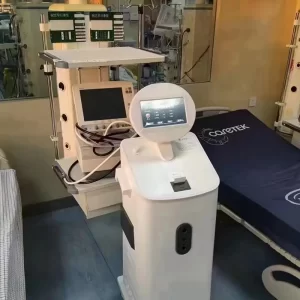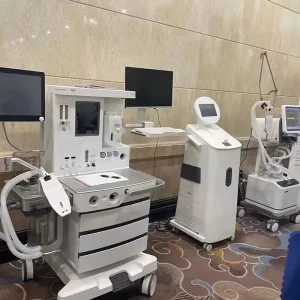Anesthetic machines are essential tools for providing safe and effective anesthesia to patients during surgical procedures. One critical component of these machines is the breathing system, which is responsible for delivering oxygen and anesthetic gases to the patient. There are several different types of breathing systems available, each with its own advantages and disadvantages. So, which is the ideal breathing system for an anesthetic machine?
One popular option is the circle breathing system. This system uses a closed circuit to recirculate exhaled gases, minimizing waste and conserving anesthetic gases. The circle system also includes a carbon dioxide absorber, which removes carbon dioxide from the exhaled gases before they are recirculated. The result is a highly efficient and cost-effective system that delivers precise amounts of oxygen and anesthetic gases to the patient.
Another option is the Mapleson system, which uses a series of tubes and valves to deliver fresh gases to the patient and remove exhaled gases. This system is versatile and can be used with both adults and children, making it a popular choice in many medical facilities. However, the Mapleson system can be less efficient than the circle system, and it may require higher flow rates to maintain adequate levels of oxygen and anesthesia.
A third option is the Bain system, which is similar to the Mapleson system but includes a coaxial tube that delivers fresh gases directly to the patient’s airway. This system is known for its efficiency and ability to provide accurate and precise levels of anesthesia, making it a popular choice for many medical professionals.
Ultimately, the ideal breathing system for an anesthetic machine will depend on a variety of factors, including the specific needs of the patient, the type of surgery being performed, and the preferences of the medical team. Medical professionals should carefully consider these factors when selecting a breathing system for their anesthetic machine to ensure the best possible outcomes for their patients.
If you’re interested in learning more about the different types of breathing systems available for anesthetic machines or need help selecting the right system for your medical facility, consult with a qualified anesthesia equipment supplier or talk to your hospital’s anesthesia department for guidance.
In conclusion, choosing the right breathing system for an anesthetic machine is a critical decision that can impact patient safety and outcomes. By carefully considering the options and selecting the system that best meets the needs of their patients, medical professionals can provide safe and effective anesthesia during surgical procedures.

